
Susanne Linke (born 19 June 1944) is an internationally renowned German dancer and choreographer who is one of the major innovators of German Tanztheater, along with Pina Bausch and Reinhild Hoffmann. [1]

Susanne Linke (born 19 June 1944) is an internationally renowned German dancer and choreographer who is one of the major innovators of German Tanztheater, along with Pina Bausch and Reinhild Hoffmann. [1]
Susanne Linke was born in Lüneburg, Germany, to Heinz Linke (a pastor) and Rosi Linke-Schäfer (born Peschko). A hearing and speech disorder and related issues delayed the development of her speaking ability as a child. The German pianist Sebastian Peschko is her uncle.
Susanne Linke only began to study dance at the age of twenty, when she went to Berlin to take lessons from Mary Wigman at her studio. Three years later she moved to Essen to pursue dance at the Folkwang Hochschule (Folkwang Academy) founded by Kurt Jooss. In 1970, she became a dancer in the school's dance company, the Folkwang Tanzstudio (Folkwang Dance Studio), then under the direction of Pina Bausch. During the period from 1970 to 1973, she also danced with the Rotterdam Dance Center. In 1975, Linke and Reinhild Hoffmann together took over leadership of the Folkwang Tanzstudio from Bausch, a position Linke continued to hold for a decade.
Susanne Linke has choreographed original dance works since 1970, becoming known for a style that is intense, austere, and neoexpressionist. [2] [3] Two of her 1975 dances—Danse funèbre (Funeral Dance) and Trop Trad (Too Trad)— were awarded prizes. Other works from the 1970s and 1980s include Puppe? (Doll?, 1975), Die Nächste bitte (Next Please, 1978), Im Bade wannen (Bath Tubbing, 1980), Wowerwiewas (1980), Flut (Flood, 1981), Frauenballett (Women's Ballet, 1981), Es schwant (It Continues, 1982), and Wir können nicht alle nur Schwäne sein (We Can't All Only Be Swans, 1982). Her first full-evening work was based on the Bacchae of Euripides. Schritte verfolgen (Follow the Steps, 1985), Linke's first major solo ballet, dealt with her problematic childhood and the development of a dancer.
Since the 1980s, Linke has participated in the major international dance festivals, often dancing her own solos. Her international solo career has been significantly supported by the Goethe-Institut. In 1985, she resigned from the management of the Folkwang Dance Studio and began to work primarily as a freelance choreographer, making work for such well-known groups as the José Limón Company in New York, the Paris Opera, and the Nederlands Dans Theater.
In 1987, Linke showed her own version of four solo choreographies reconstructed from films of Dore Hoyer's 1962 Afectos Humanos (Human Affects) cycle dedicated to the themes of vanity, lust, fear, and love. [3] She added a fifth segment, Dolor (Sorrow) as a confrontation with Hoyer's work and an homage to Hoyer, whom Linke greatly admired and had met during her student days in Essen. [3] She followed this up with two further works, the duets Affekte (Affects, 1988) und Affekte/Gelb' (Affects/Yellow, 1990), that extended the basic themes of Afectos Humanos through a relationship between two people. Linke danced these with her partner Urs Dietrich.
In the early 1990s, she founded the Susanne Linke Company at the Hebbel Theater in Berlin. Then, in 1994, she co-founded (with Urs Dietrich) a new dance company at the Bremer Theater in Bremen and continued to direct this company until 2000. In 2000-01, she co-founded a new choreographic center in Essen, the Choreographisches Zentrum Essen, and became its artistic director. Since 2001, she has worked frequently as a freelance choreographer and dancer.
In 2007, the German Professional Association for Dance Education gave Linke the prestigious German Dance Prize in honor of her life's work in dance. In 2008, she was appointed to the French Order of Arts and Letters. Since 2010, she has been an honorary professor at the Folkwang University of the Arts in Essen.

Kurt Jooss was a famous German ballet dancer and choreographer mixing classical ballet with theatre; he is also widely regarded as the founder of Tanztheater. Jooss is noted for establishing several dance companies, including most notably, the Folkwang Tanztheater, in Essen.

Expressive dance from German Ausdruckstanz, is a form of artistic dance in which the individual and artistic presentation of feelings is an essential part. It emerged as a counter-movement to classical ballet at the beginning of the 20th century in Europe. Traditional ballet was perceived as austere, mechanical and tightly held in fixed and conventional forms. Other designations are modern dance and free dance, expressionist dance or new artistic dance, in Anglo-American countries German dance. In 2014, modern dance with the stylistic forms and mediation forms of rhythmic and expressive dance movements was included in the German List of intangible Cultural Heritage as defined by the UNESCO Convention for the Safeguarding of Intangible Cultural Heritage. German Expressionist dance is related to Tanztheater.
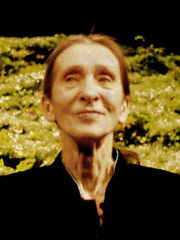
Philippine "Pina" Bausch was a German dancer and choreographer who was a significant contributor to a neo-expressionist dance tradition now known as Tanztheater. Bausch's approach was noted for a stylized blend of dance movement, prominent sound design, and involved stage sets, as well as for engaging the dancers under her to help in the development of a piece, and her work had an influence on modern dance from the 1970s forward. Her work, regarded as a continuation of the European and American expressionist movements, incorporated many expressly dramatic elements and often explored themes connected to trauma, particularly trauma arising out of relationships. She created the company Tanztheater Wuppertal Pina Bausch, which performs internationally.
The German Tanztheater grew out of German Expressionist dance in Weimar Germany and 1920s Vienna. The term first appears around 1927 to identify a particular style of dance emerging from within the new forms of 'expressionist dance' developing in Central Europe since 1917. Its main exponents include Mary Wigman, Kurt Jooss and Rudolf Laban. The term reappears in critical reviews in the 1980s to identify the work of primarily German choreographers who were students of Jooss and Wigman, along with the Austrian Johann Kresnik. The development of the form and its concepts was influenced by Bertolt Brecht and Max Reinhardt, and the cultural ferment of the Weimar Republic.
The Green Table is a ballet by the German choreographer Kurt Jooss. His most popular work, it depicts the futility of peace negotiations of the 1930s. It was the first work to be fully notated using kinetography Laban (Labanotation). It is in the repertoire of ballet companies worldwide, where it has been staged by Jooss himself. Since his death in 1979, his daughter Anna Markard has been responsible for stagings of the work.
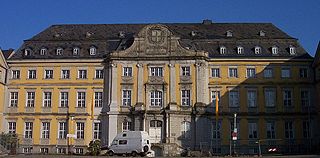
The Folkwang University of the Arts is a university for music, theater, dance, design, and academic studies, located in four German cities of North Rhine-Westphalia. Since 1927, its traditional main location has been in the former Werden Abbey in Essen in the Ruhr area, with additional facilities in Duisburg, Bochum, and Dortmund, and, since 2010, at the Zeche Zollverein, a World Heritage Site also in Essen. The Folkwang University is home to the international dance company Folkwang Tanz Studio (FTS). Founded as Folkwangschule, its name was Folkwang Hochschule from 1963 until 2009.
Wu Kuo-chu was a Taiwanese choreographer.

Dominique Mercy is a French contemporary dancer. He has been a member, since 1974, of the Tanztheater Wuppertal company of Pina Bausch as well as a choreographer in his own right.
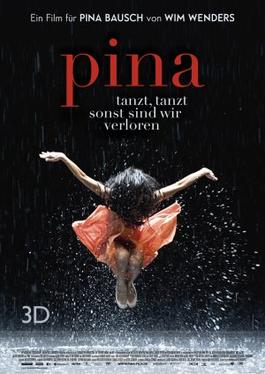
Pina is a 2011 German 3D documentary film directed by Wim Wenders that is about German dancer and choreographer Pina Bausch. On 30 June 2009, during the preparation for the film, Bausch died unexpectedly, so Wenders cancelled the project, but the dancers of Bausch's company, Tanztheater Wuppertal, convinced him to proceed as planned, as a way of memorializing Bausch and some of her choreography.
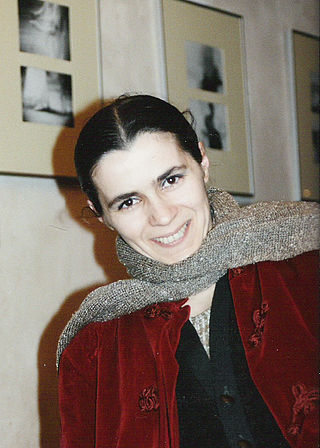
Toula Limnaios is a Greek choreographer, performer and, alongside a composer Ralf R. Ollertz, artistic director of cie. toula limnaios, a dance company based in HALLE TANZBÜHNE BERLIN.
Reinhild Hoffmann is a German choreographer and dancer who is an important innovator in Tanztheater, along with Pina Bausch and Susanne Linke.
The Deutscher Tanzpreis is a prestigious prize for artistic dance in Germany. It has been awarded annually since 1983.

Nikolina Nikoleski, born in Zagreb, Croatia, is a leading dancer and choreographer of Bharatanatyam. She learned contemporary dance in Germany at the prestigious dance academy of Pina Bausch – - and spent six years in India learning Bharatanatyam. Her Guru is the highly regarded Padmashree Dr. Saroja Vaidyanathan. She is half Macedonian and half Croatian.

Sigurd Leeder was a German dancer, choreographer and dance education theorist. He was born in Hamburg on 14 August 1902, the son of Carl Eduard Gottfried Leder, lithographer, and Martha Auguste Anna Henriette Friedrich. He died in Herisau, Switzerland, on 20 June 1981. He developed a method of teaching expressive dance and contributed, with Albrecht Knust, to the development and dissemination of labanotation, which pioneered the written language of symbols to record and represent modern dance.
Café Müller is a dance choreographed by Pina Bausch set to the music of Henry Purcell. It has been performed regularly since its creation and in May 1978 was performed and filmed at the Opernhaus, and broadcast on German television in December of that year.
Lin Mei-hong is a Taiwanese choreographer. Lin began dancing with the Lanyang Dance Troupe in Taiwan, then moved to Italy and Germany for further training. She has spent the majority of her career in Europe, with the Ballet in Plauen, Theater Dortmund, and Staatstheater Darmstadt. In 2013, Lin became artistic director for the ballet of the Austrian Landestheater Linz.
Raimund Hoghe was a German choreographer, dancer, film maker, journalist, and author. Because he was born with scoliosis, his early efforts were focused on journalism. His writings explored the human condition; a documentation series won him an award by the age of 24. For the weekly Die Zeit, he portrayed personalities, the well-to-do, the less fortunate, and those shunned by society. After meeting Pina Bausch while profiling her, he served as dramaturge and chronicler of her Tanztheater from 1980 to 1990. He made his choreographic debut in 1989, then worked independently. His first solo production, Meinwärts in 1994, was about the Jewish tenor and actor Josef Schmidt, but also Hoghe's nonormative body. He was awarded the Deutscher Tanzpreis in 2020, and is regarded as "one of the protagonists of German contemporary dance theatre".
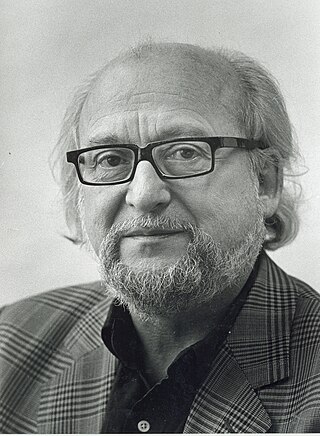
Jochen Schmidt was a German journalist and book author, especially as a dance theatre expert. He became known through more than 30 years as a critic in the Frankfurter Allgemeine Zeitung, reviewing also non-fiction books on dance and crime novels, and working for other papers and broadcasters. He closely watched Pina Bausch's Tanztheater Wuppertal, and published a biography of her. He wrote a book about the history of dance in the 20th century, observing mainly European, but also international innovations.
Annelise Löffler, also Anneliese was a German photographer.
Vivienne Newport was an English dancer, choreographer and director of the Theater am Turm. She founded the "Vivienne Newport company" in October 1981 in Frankfurt.